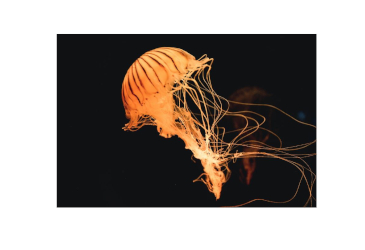- Series:Animals, Transcript English
It is always as dark as night 2,000 feet beneath the ocean’s surface. Yet, a rich variety of life thrives in the darkness. The strategies for life, however, are quite different far beneath the waves.

Even in the deep ocean, predators search for prey, and prey tries to escape predators. The permanent darkness and buoyant water allow for unusually creative strategies in this rhythm of life. Some creatures try to hide in the darkness. Others use light to lure prey close to them. Some creatures even squirt luminescent clouds into the water to make predators think that they are where they’re not.
Perhaps the most creative is a species of jellyfish. When a potential predator comes close to the jellyfish, the jellyfish turns off the lights in its bell-shaped body. Then, switching off the lights in its tentacles, the jellyfish scoots away as fast as it can. If the predator wasn’t fooled and continues the chase, the jellyfish switches to plan B. It turns on the blue light in its body and the white lights in its tentacles. When the attacker is very close, the jellyfish turns off the light in its body and takes off, detaching its still-glowing tentacles. The tentacles continue to writhe in the water, distracting the predator.
According to evolution, jellyfish are among the most primitive multicelled animals. In this clever survival strategy, we see that jellyfish are neither simple nor primitive. They are a true credit to the Creator’s handiwork!
1 Corinthians 10:13
“There hath no temptation taken you but such as is common to man: but God [is] faithful, who will not suffer you to be tempted above that ye are able; but will with the temptation also make a way to escape, that ye may be able to bear [it].”
Prayer:
Father, nothing You have made fails to declare Your glory. Help me do a better job of glorifying You so that more people may be invited to Your forgiving grace in Jesus Christ. In His Name. Amen.
Notes:
Discover, February, 1986. P. 67. Photo: Jellyfish (Pixabay.com)
